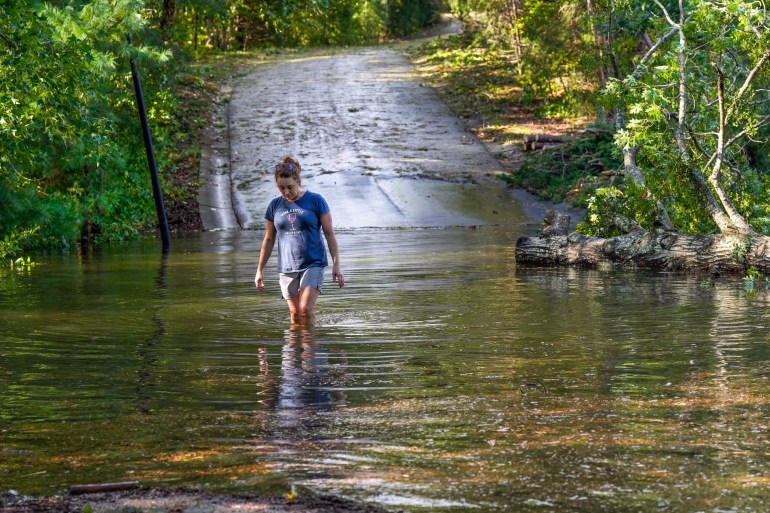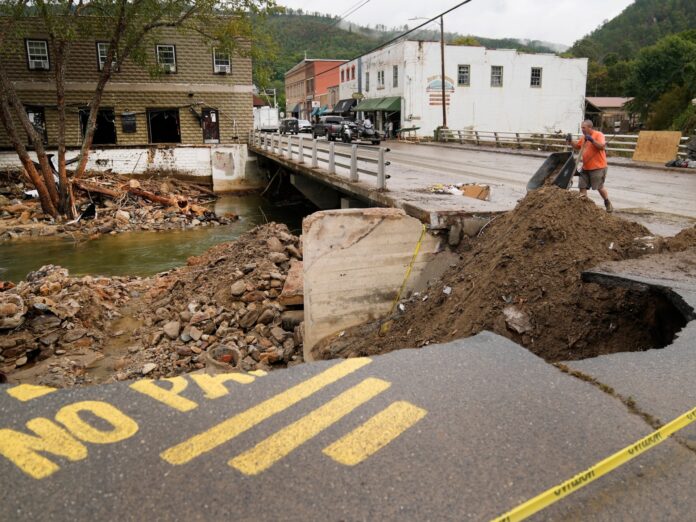North Carolina lawmakers have passed almost $900m in disaster relief, but that’s still way short of the likely cost.
Lawmakers in the state of North Carolina have approved nearly $900 million in aid for Hurricane Helene disaster relief. However, this figure is just an initial estimate as the final cost is still being determined.
The state legislators unanimously voted to allocate an additional $604 million in funding, on top of the $273 million that was previously authorized.
Governor Roy Cooper announced that the catastrophic flooding and destruction caused by Hurricane Helene in western North Carolina last month likely resulted in damages and recovery needs totaling at least a record-breaking $53 billion.
If confirmed, this would make Helene the 10th costliest weather disaster in the United States since 1980, according to the National Oceanic and Atmospheric Administration (NOAA).
The $53 billion estimate only covers damages in North Carolina, but Helene also affected multiple states in the US Southeast, resulting in 214 fatalities. Therefore, the final cost could be even higher.
The Florida Office of Insurance Regulation estimated that Hurricane Helene caused $13.4 billion in insured losses in the state as of October 17th.
Cooper has requested an initial $3.9 billion package to kickstart rebuilding efforts, focusing on critical infrastructure, homes, businesses, farms, and schools in North Carolina that were damaged by Helene.
‘A good start’
“Helene is the deadliest and most damaging storm ever to hit North Carolina,” Cooper stated while presenting his spending request to the state General Assembly.
“These initial funds are a good start, but the staggering amount of damage shows we are very much on the front end of this recovery effort,” he added.
Cooper noted that the state’s previous record for storm damage was $17 billion from Hurricane Florence in 2018.
Helene and its aftermath led to 1,400 landslides, damaged over 160 water and sewer systems, at least 9,650 kilometers (6,000 miles) of roads, more than 1,000 bridges and culverts, and approximately 126,000 homes, as per the budget office.
Approximately 220,000 households are expected to seek federal assistance.
The damage report forecasts $48.8 billion in direct or indirect damages, along with an anticipated $4.8 billion in mitigation expenses. The budget office predicts that the federal government will cover $13.6 billion, with private and other sources contributing $6.3 billion.
Legislators acknowledge that most of the losses will not be recovered since very few homeowners and farmers in the affected areas had flood or crop insurance.
According to the report, nearly 93% of homes with verified flood damage by FEMA lacked flood insurance.
Cooper’s request includes $475 million for a business recovery program in the hardest-hit areas, $225 million for farmers’ grants for uninsured losses, and $100 million for public school and community college capital needs.
Cooper also seeks $325 million to assist homeowners and renters with immediate rebuilding and minor repairs while waiting for a larger program dependent on federal funds to be implemented.

Death toll reduced
North Carolina state officials have reported 96 deaths from Helene, which brought historic levels of rain and flooding to the mountains in late September.
The death toll was reduced after one of the worst-hit counties discovered it had overcounted fatalities by as many as 30. Buncombe County, which previously reported 72 deaths, reduced its count to 42.
As a result, The Associated Press adjusted its multi-state tally for Helene to 214 deaths.




